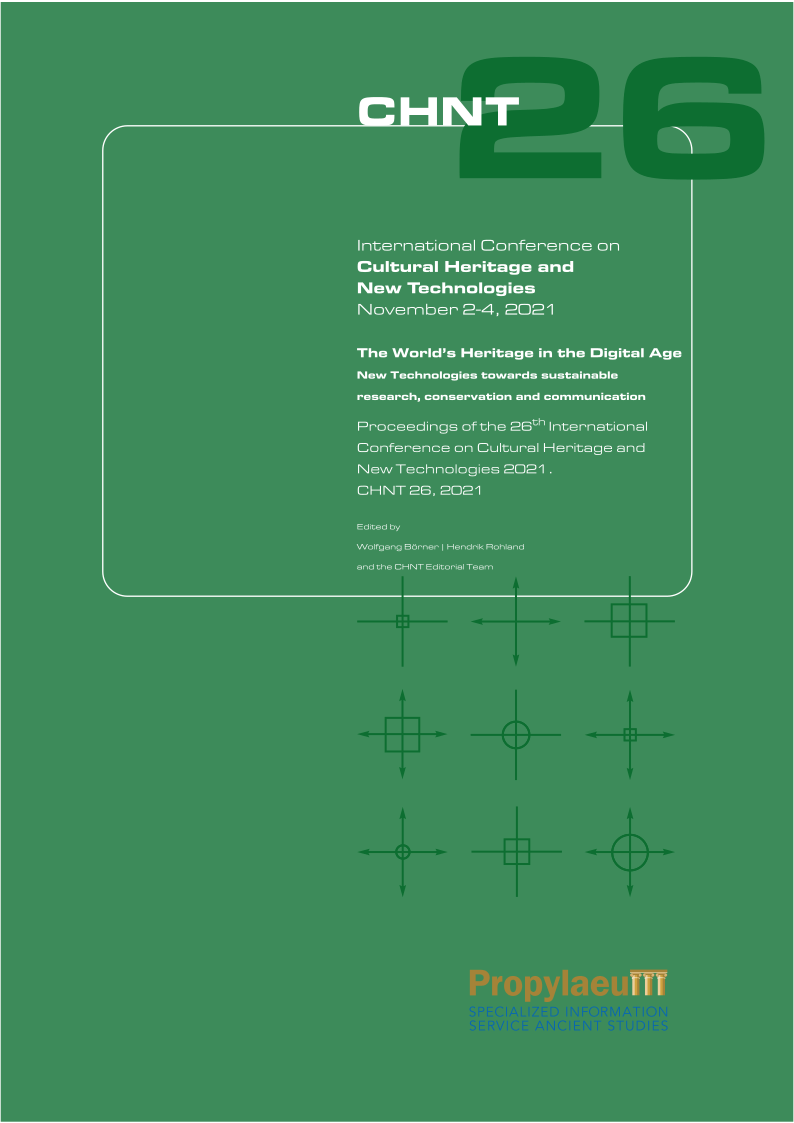The eyes of the city: Historic casement windows as a threatened asset of cultural heritage.
Improvement of casement windows with vacuum glazing.
Keywords:
Casement Windows, Thermal Retrofit, Vacuum Glazing Products, built environment, thermal improvementAbstract
Traditional casement windows are considered not only as aesthetically sophisticated window constructions, but also have been subjected to century-long optimization processes. Rough estimates state that there is a large number of these windows still to be found in the building stock of European cities, e.g. Vienna. However, the number is in constant decline, as casement windows often are considered expensive in maintenance and dissatisfactory in their thermal performance and fulfilment of current comfort desires of building occupants, and thus are often demolished and replaced by new windows. Moreover, many building retrofit subsidy programms do not consider the restoration of windows as a feasible measure and only window replacement is subsidized. Needless to say, the replacement of casement windows with modern-day single layer multi-pane windows in historic facades is often a fundamental distortion in the corresponding façade appearance and thus a threat to the built cultural heritage of cities. One option to satisfy both the performance expectations of occupants and the appearance upkeep required for cultural heritage protection is employing vacuum glass as replacement for float glass. The implementation of vacuum glass products in existing window constructions – however - brings up a set of questions, such as the possible thermal performance improvement of the window, thermal bridge effects in the glass/frame/Wall joints, and constructive integration possibilities. A collaborative R&D project started in 2019 (VAMOS – Vakuumglas-Kastenfenster: Performance - Monitoring in Sanierungsprojekten) focussed onto the construction implementation of vacuum glass in demonstration windows, which was accompanied by comprehensive simulation and monitoring of the demo site windows.
References
BDA (2011): Richtlinie Energieeffizienz Am Baudenkmal, Austrian Monuments Office, 2011, not any longer available online (replaced by version 2021).
BDA (2021): Richtlinie Energieeffizienz Am Baudenkmal, 1. Fassung Austrian Monuments Office, 2021, available via https://www.bda.gv.at/dam/jcr:544db343-26b3-44ad-bcb7-e619703ead8f/Standards%20Energieeffizienz%20am%20Baudenkmal%202021_final_BF.pdf
Pont, U., Proskurnina, O., Mahdavi, A. (2016): Das Potential von Vakuumgläsern für Bestand und Neubau: Empiri-sche, messtechnische und simulationsgestützte Annäherung an entsprechende Architekturdetaillierung; in: For-schungstag 2016, Fakultät für Arch & RPL (ed.); issued by: Tu Wien, Fakultät für Architektur und Raumpla-nung; Forschungstag 2016, Wien, 2016, ISBN: 978-3-902707-32-1, 42 - 43.
Pont, U., Heiduk, E., Schober, P., Romirer, H., Dolezal, F., Proskurnina, O., Schuss, M., Sustr, C., Hohenstein, H., Mahdavi, A. (2018a): Sondierung von Fenstersystemen mit innovativen Gläsern, speziell Vakuum-Isoliergläsern, zur Gebäudesanierung; Schriftenreihe 33/2018, BMVIT / Federal Ministry of Traffic, Innovation, and Technology; available via https://nachhaltigwirtschaften.at/resources/sdz_pdf/berichte/schriftenreihe-2018-33-vigsysreno.pdf
Pont, U., Schuss, M., Mahdavi, A., Schober, P., Hauer K., Lux, C. (2018b): Modellierung, Optimierung und techni-sche Integration von Vakuumglas-Elementen; Schriftenreihe 24/2018, BMVIT / Federal Ministry of Traffic, Inno-vation, and Technology; available via https://nachhaltigwirtschaften.at/resources/sdz_pdf/berichte/schriftenreihe-2018-24-motive.pdf
Pont, U., Wölzl, M., Schuss, M., Mahdavi, A., Schober, P., Haberl, J., Lux, C. (2020a): Fensterprototypen mit in-tegriertem Vakuumglas (FIVA); Schriftenreihe 47/2020, BMVIT / Federal Ministry of Traffic, Innovation, and Technology; available via https://nachhaltigwirtschaften.at/resources/sdz_pdf/schriftenreihe-2020-47-fiva.pdf
Pont, U., Schober, P., Wölzl, M., Schuss, M., Haberl, J. (2020b): "Das Morgenfenster - Entwicklung smarter und energieeffizienter Fensterprototypen"; Keynote Lecture: Fenster-Türen-Treff 2020, Salzburg (invited); 2020-03-05 - 2020-03-06; in: "Happy Birthday - Fenster-Türen-Treff 2020 - Tagungsband 5.-6. März 2020 Salzburg", Holz-forschung Austria (ed.); (2020), ISBN: 978-3-9504488-8-7; 30 - 38
Pont, U., Schober, P., Wölzl, M., Schuss, M., Hauer, K., Haberl J.(2022): Endbericht VAMOS; to be published / BMK – Federal Ministry for Climate Action, Environment, Energy, Mobility, Innovation and Technology, Republic of Austria.
Proskurnina, O., Pont, U., Mahdavi, A. (2016): The performance of vacuum glazing in existing window construc-tions: A case study; Talk: Proceedings of the CESBP Central European Symposium on Building Physics AND BauSIM 2016, Dresden, Germany; 2016-09-14 - 2016-09-16; in: Proceedings of the 3rd Central European Sym-posium on Building Physics, J. Grunewald et al. (ed.); Technische Universität Dresden / Scientific Committee of the CESBP, (2016), 978‐3‐8167‐9798‐2; 435 - 440.
Schuss, M., Pont, U., Wölzl, M., Schober, P., Mahdavi A. (2021): In-situ performance evaluation of historic box-type windows with vacuum glazing; in Journal of Physics: Conference Series, 2069 (2021), 012128.
Downloads
Published
Conference Proceedings Volume
Section
License
Copyright (c) 2025 Ulrich Pont, Peter Schober, Magdalena Wölzl, Matthias Schuss, Jakob Haberl, Karin Hauer

This work is licensed under a Creative Commons Attribution-ShareAlike 4.0 International License.
The CHNT older Proceedings are licensed under the creative commons license CC BY-NC-ND 3.0.
From the issue 26 on, they will be licensed under the creative commons license CC-BY-SA 4.0


